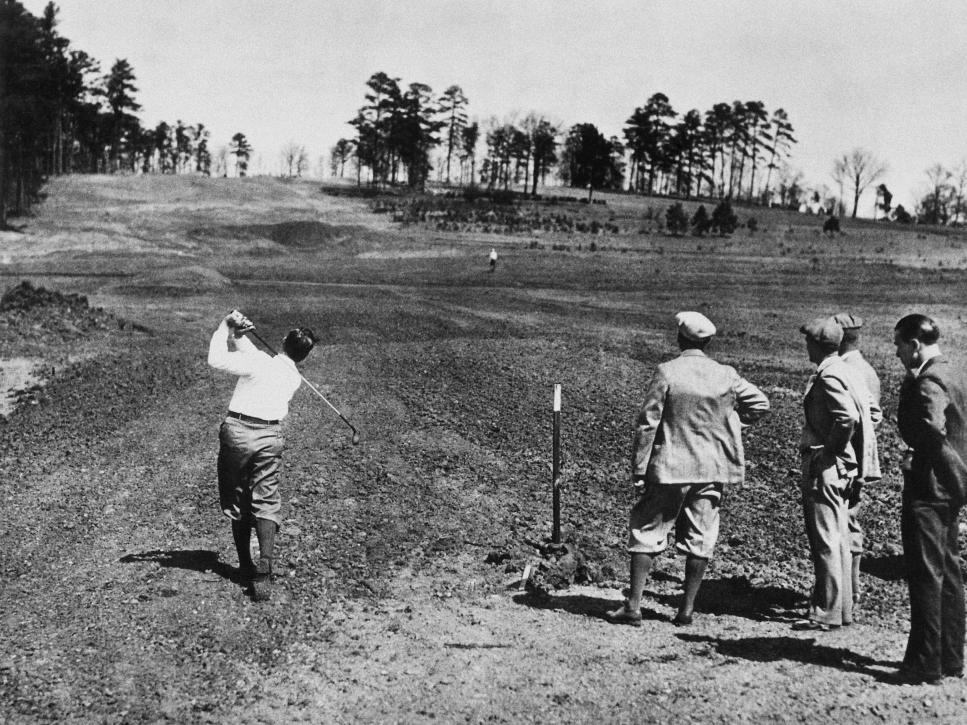Augusta National
Bobby Jones (L) plays a shot on Augusta National’s eighth hole while the course is under construction in front of his father, Bob Jones, Sr., Clifford Roberts, and Alister MacKenzie in 1932.
By Alex Myers
There was a moment when it looked like the 2020 Masters wouldn’t happen. The annual April tournament had been postponed due to the coronavirus pandemic and judging by the reactions of golf fans, you would have thought Christmas had been cancelled.
Thankfully, a move to November eventually came about and the sports world exhaled a collective sigh of relief. There would be no azaleas blooming and no patrons roaring, but there would be a golf tournament at Augusta National.
If you think this was the first time this tournament’s status was in doubt, though, you’d be wrong. Long before COVID-19 and before even World War II, uncertainty enveloped the event like the swirling wind around Amen Corner.
On the latest episode of Local Knowledge, we examine the surprisingly humble beginnings of arguably the country’s most exclusive club and the sport’s most prestigious tournament. A time when the home of the green jacket was actually in the red. Deep in the red.
We spoke with longtime New Yorker and Golf Digest writer David Owen, whose book, “The Making of the Masters,” is the definitive history of the tournament and Augusta National co-founder Clifford Roberts. We also talked to legendary sportswriter Dave Kindred, who has covered every Masters except one since 1967. Our chats with both reveal just how close the Masters came to fizzling out in its early years, and why the tournament wound up becoming golf’s premier event.









